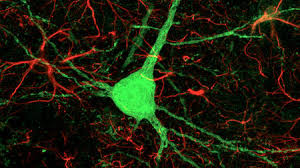
Breaking News
 THIS IS A FIRST FOR ME AND MY HOMESTEAD
THIS IS A FIRST FOR ME AND MY HOMESTEAD
 6 friends, 6 units, 1 lot: each owns their dream home for $800/month
6 friends, 6 units, 1 lot: each owns their dream home for $800/month
 Trump & Putin Meet In Alaska, Melania's Epstein Lawsuit & Netanyahu TROLLS Iran | PBD Podcast 63
Trump & Putin Meet In Alaska, Melania's Epstein Lawsuit & Netanyahu TROLLS Iran | PBD Podcast 63
Top Tech News
 Chinese Scientists Produce 'Impossible' Steel to Line Nuclear Fusion Reactors in Major Break
Chinese Scientists Produce 'Impossible' Steel to Line Nuclear Fusion Reactors in Major Break
 1,000 miles: EV range world record demolished ... by a pickup truck
1,000 miles: EV range world record demolished ... by a pickup truck
 Fermented Stevia Extract Kills Pancreatic Cancer Cells In Lab Tests
Fermented Stevia Extract Kills Pancreatic Cancer Cells In Lab Tests
 3D printing set to slash nuclear plant build times & costs
3D printing set to slash nuclear plant build times & costs
 You can design the wheels for NASA's next moon vehicle with the 'Rock and Roll Challenge
You can design the wheels for NASA's next moon vehicle with the 'Rock and Roll Challenge
 'Robot skin' beats human reflexes, transforms grip with fabric-powered touch
'Robot skin' beats human reflexes, transforms grip with fabric-powered touch
 World's first nuclear fusion plant being built in US to power Microsoft data centers
World's first nuclear fusion plant being built in US to power Microsoft data centers
 The mitochondria are more than just the "powerhouse of the cell" – they initiate immune...
The mitochondria are more than just the "powerhouse of the cell" – they initiate immune...
 Historic Aviation Engine Advance to Unlock Hypersonic Mach 10 Planes
Historic Aviation Engine Advance to Unlock Hypersonic Mach 10 Planes
 OpenAI CEO Sam Altman Pitches Eyeball-Scanning World ID to Bankers
OpenAI CEO Sam Altman Pitches Eyeball-Scanning World ID to Bankers
Converting cells into new neurons could lead to a pill that repairs brain damage

Now researchers at Penn State may have found a way to boost the brain's regenerative abilities, using certain molecules to convert neighboring cells into new neurons. The technique could eventually lead to pills that treat brain injuries, stroke or Alzheimer's disease.
Most cells in the body can patch up damage by dividing to create new versions of themselves. But neurons lack this ability, so once they're damaged through illness or injury, there's not much that can be done. Worse still, in an overzealous attempt to protect the injured site, glial cells form scar tissue around damaged brain regions, which can reduce what little neuron growth there might be and prevent neurons from effectively communicating with each other.

 I CAN BELIEVE IT'S NOT BUTTER
I CAN BELIEVE IT'S NOT BUTTER


